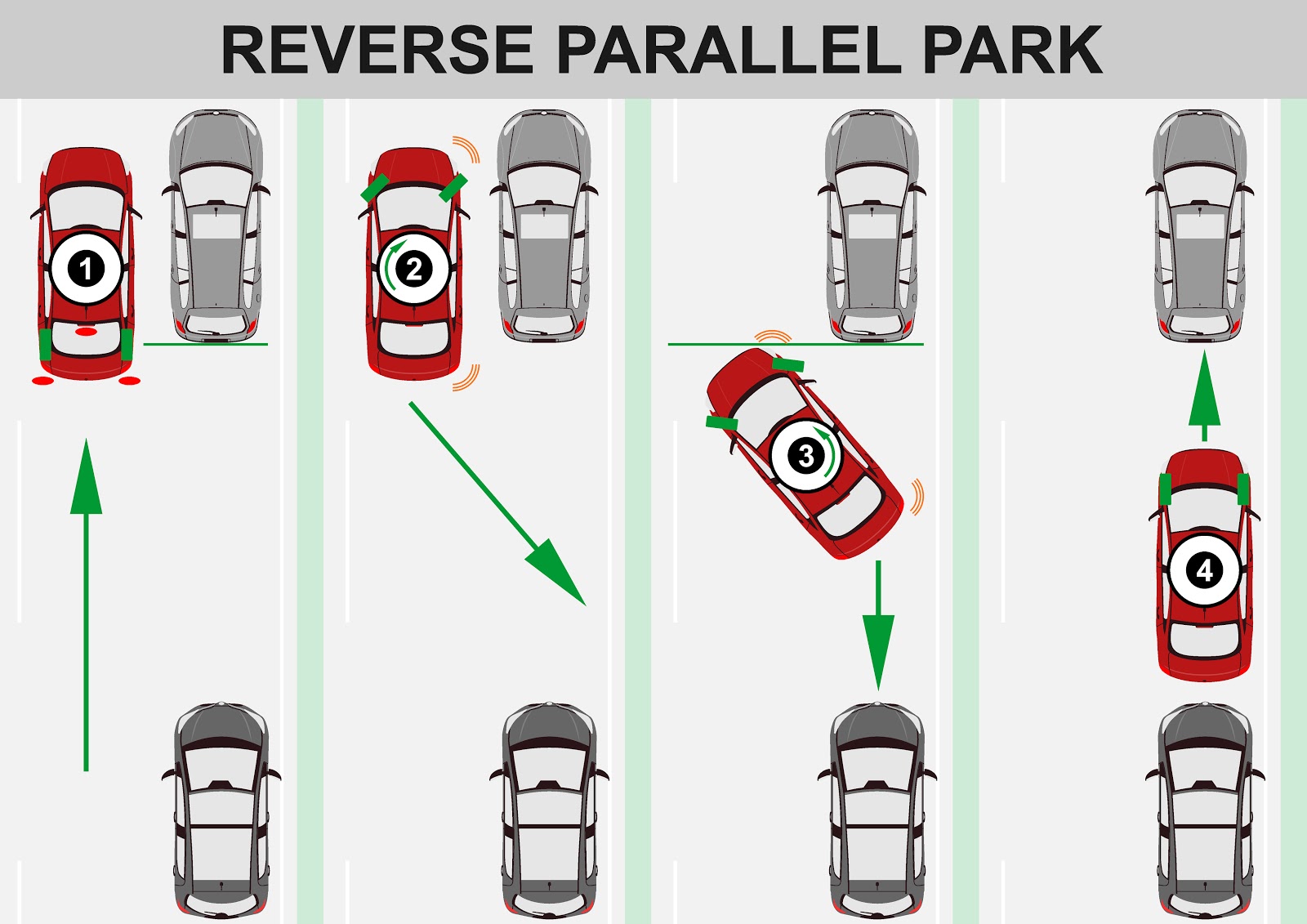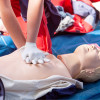By The Acclaim Team on 13th January 2021 in News
What Are The Manoeuvres In A Driving Test?
You may be a confident driver preparing to take your test, however, even some of the best drivers struggle with the basic driving manoeuvres, including bay parking, reverse bay parking, parallel parking and an emergency stop.
Whether you have already booked your test or have only just started learning to drive, it’s absolutely vital that you know the driving test manoeuvres and understand how best to demonstrate them. As your driving test examiner will ask you to perform one manoeuvre chosen at random, it’s important that you can successfully and confidently demonstrate all four manoeuvres.
Of course, there are other important driving manoeuvres that won’t be in the driving test, however, these are still important for you to learn when you become an independent driver.
This guide explains the driving test manoeuvres you should be expected to demonstrate during your driving test with some expert tips on how best to complete these.
Bay Parking
One of the most important manoeuvres is bay parking, which is a basic manoeuvre which you will most likely be using every time you drive your car. Bay parking is split into two manoeuvres of forward bay parking and reverse bay parking. While many prefer to forward bay park, it is far safer to reverse bay park and is, in some instances, much easier than forward bay parking.
With that being said, it is vital to know how to safely demonstrate both manoeuvres as you may be asked to demonstrate this during your driving test, however, you may only be asked to demonstrate one.
Your examiner will ask you to choose a parking bay to drive into, which you must manoeuvre into, keeping inside the lines.
Forward Bay Parking
You should start off by choosing a bay that is easiest for you, bearing in mind that you should avoid bays with vehicles on either side, if you can.
Move over to the left and give yourself plenty of room and take your time to prepare. Check your mirror and blindspots to plan your point of turn, ensuring that you cause minimal disruption to pedestrians and other drivers.
Ensure that the way is completely clear before steering quickly while moving at a slow pace. Turn the steering wheel into full lock to manoeuvre the vehicle into the correct position, then straighten up and slowly drive forward until you are wholly in the bay. Stop the vehicle and apply your handbrake.
In order to leave the bay, you will need to do all necessary checks - making sure that all blindspots and mirrors are checked before going into reverse gear. Begin reversing to your reference point and do a half turn until you’re clear. Switch to first gear, indicate, complete checks, and then move off.
Reverse Bay Parking
Choose your bay and aim to position yourself in the centre of the road to give yourself enough space to manoeuvre, with approximately two car lengths past the bay, which is typically the third line from the bay.
Position the steering wheel into a full lock and slowly reverse the vehicle back towards your chosen bay, making sure that you take your time and check your side mirrors throughout the manoeuvre. As you move into the bay, check your mirrors and straighten up until the lines of the way are either side of the vehicle. Continue reversing back and stop when you are wholly into the pay. Put the gearbox into neutral and pull up the handbrake.
When the examiner tells you to move off, switch to first gear and indicate left or right before driving out. Be sure to check all mirrors and blindspots and watch out for any pedestrians or other drivers.
Parallel Parking
The most complex manoeuvre for many is parallel parking, which involves critical positioning, slow moving and checking your blind spots and mirrors during every step. The trick is slow reversing, but fast steering.
If your examiner asks you to demonstrate parallel parking, you will be required to reverse into a space behind another vehicle by pulling up besides it. This manoeuvre is critical to learn if you live in a city or if parking is restricted where you live, for example, in a street of terraced houses.

To begin, pull alongside the car and position yourself into place so that your driver or passenger side window is lined up with the front of the vehicle next to you (or with its rear bumper if the car is facing the opposite direction).
Check your mirrors and blindspots and keep an eye on the rear view mirror. Fully lock the steering wheel into position and slowly reverse as you approach the parallel parking space. Line up your rear tyres with the rear bumper of the other car in front of your space (or the front bumper if the car is facing the opposite direction).
Stop the car and check your mirrors and blindspots. Turn the steering wheel one complete turn back while keeping the reversing nice and steady. Once you see the kerb in your wing mirror and the car in front is clear, turn the steering wheel for another complete turn. Continue steering the wheel and reverse until you are parallel with the kerb.
Ensure that the car is in position with enough space either side for the other vehicles to be able to safely drive away. Continue straightening up if necessary and then pull up your handbrake to secure the car.
Pulling Up on the Right
Pulling up on the right is one of the most controversial manoeuvres for the DVSA driving test as it urges learner drivers to pull out where drivers are usually advised not to park against the flow of traffic. With that being said, pulling up on the left is not always possible if parking spaces are only available on the right-hand side of the road, so it is therefore important that you learn how to do this manoeuvre safely for the future.
Your examiner will ask you to pull up on the right-hand side of the road when it is safe to do so, before reversing back for two car lengths and then safely getting back onto the road.
To safely demonstrate pulling up on the right, you should first find a safe location, avoiding driveways, bends or junctions and where minimal disruption is created other drivers. It is also important to make sure you have a full view around you where you decide to pull over.
Use your mirrors, signal and then manoeuvre to safely pull over to the right, checking that no one is in your blindspots first. If you fail to check your blindspots, you will unfortunately fail your test. Pull up to a safe place and get your vehicle parallel with the kerb before stopping the car in order to prevent any obstruction to oncoming vehicles. Stop the car and pull up your handbrake.
When pulling away, check your blindspots and your mirrors before slowly reversing back for two car lengths, before stopping and putting the handbrake back up. Once it is safe, indicate left and safely move away and rejoin the road.
Emergency Stop
While we understand the emergency stop isn’t strictly a manoeuvre, your examiner may ask you to safely demonstrate this during your DVSA test. The emergency stop tests your ability to stop the vehicle quickly, without losing control, and demonstrates your hazard perception skills and response rate, which means that the preparation for the hazard perception section of your theory test will be paid off!
Your examiner will give you a heads-up before they ask you to demonstrate an emergency stop, so you will know beforehand what to expect. The examiner will start by checking your mirrors and blindspots before ensuring that the road is clear (both ways) before shouting “Stop” and raising their hand.
Emergency stops aren’t always convenient and for some, can even be scary. However, it’s a critical manoeuvre and can save lives as it prepares you for the worst case scenario.
It’s important that you await instructions and take action immediately. It’s also important that you understand whether or not the vehicle has ABS (Anti-Lock Braking Systems) before taking your test, as this will change how you should respond. If the vehicle has ABS, you will need to depress the brake pedal and clutch at the same time. However, you may need to brake and then press the clutch - so you’ll need to find clarification from your instructor beforehand.
Practice Makes Perfect
Pass your driving test with confidence and be on the road in no time with our industry-leading driving instructors. All of our instructors are super friendly and you can either book quickly and easily online or call the office and one of the team will talk you through your options.
Here at Acclaim Driving we are always here to help with your driving test needs. Be sure to contact us, or reach out on 0800 838 440 if you have any questions about passing your driving test. Book your driving lesson now or get in touch for more information.




